What we were hoping to show with this cool splatter pattern investigation was that a water balloon dropped from a greater height falls with more speed and has a bigger splatter pattern than a water balloon of the same size dropped from a lower height.
As with many science investigations, we hit a few issues along the way. The balloons broke a little too easily, especially when accidentally dropped. There were lots of great questions and lovely giggles, though, so despite it not working very well, we still had fun.
What you’ll need to make splatter patterns
A large tray or hard surface
Paint
Water balloons
How to make Splatter Patterns
Fill water balloons with water or paint and tie the ends. You can water down the paint if you’d rather.
Drop the balloons from different heights and observe how the splatter pattern changes.
We found that the balloons didn’t always burst when dropped from a low height, so we placed a needle in the centre of the tray and used plasticine to hold it in place.
You can see that when the water balloon was dropped from higher up, the water spread out much further. This is because the balloon had further to travel before hitting the ground and, therefore, burst when travelling at a higher speed, which made the water spread out more.
To make things a bit clearer, I filled some more water balloons with paint and water mixed together. This was a very messy process, and I’d recommend filling the balloons either outside or in a sink.
Splat from the lowest height.
From a bit higher up.
From even higher.
With each increase in height, the spatter was bigger.
There are a few issues with this experiment. I couldn’t be sure that the balloons all held exactly the same amount of water/paint. I did weigh the water balloons, but there was a few grams difference, and the paint ones were so hard to fill up that it would’ve been impossible to get the same amount in each.
I would have liked to have measured the distance between the needle and the edges of each splat, but our container was a little small.
Can you do this with more accuracy? You could draw a graph to display your results.
How many colours can you include in your splatter pattern?
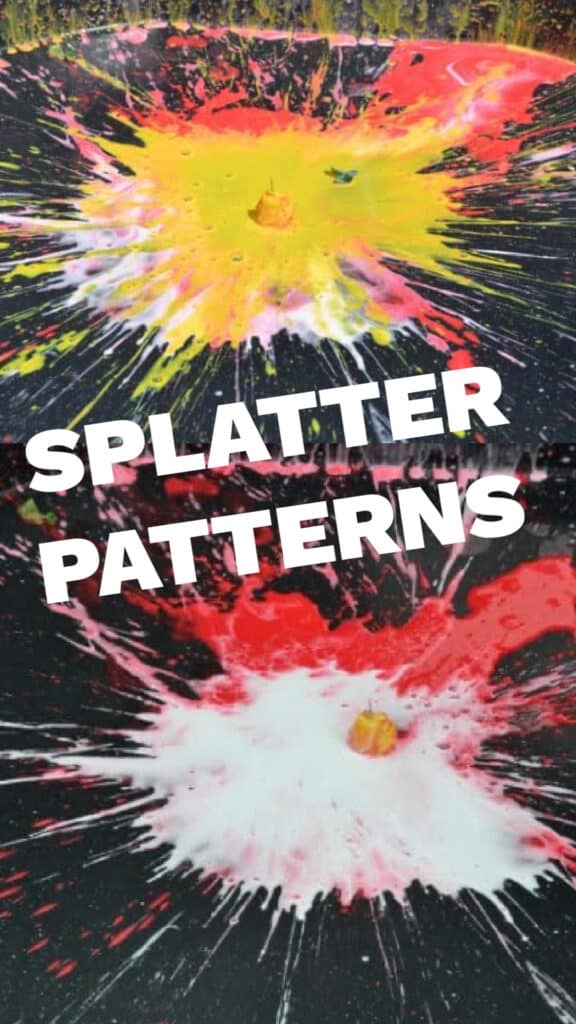
Last Updated on February 26, 2024 by Emma Vanstone

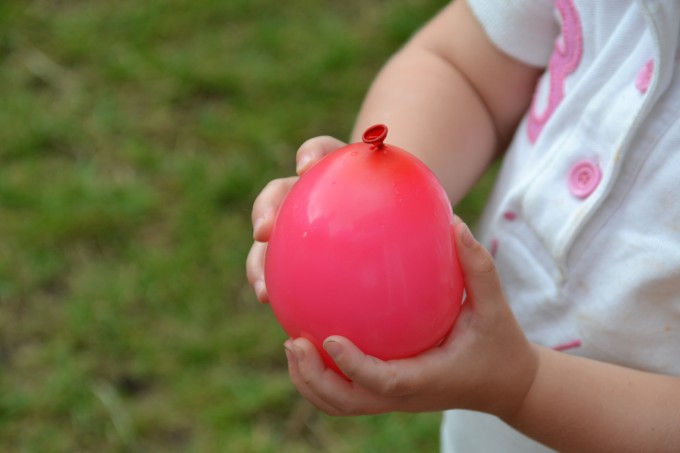
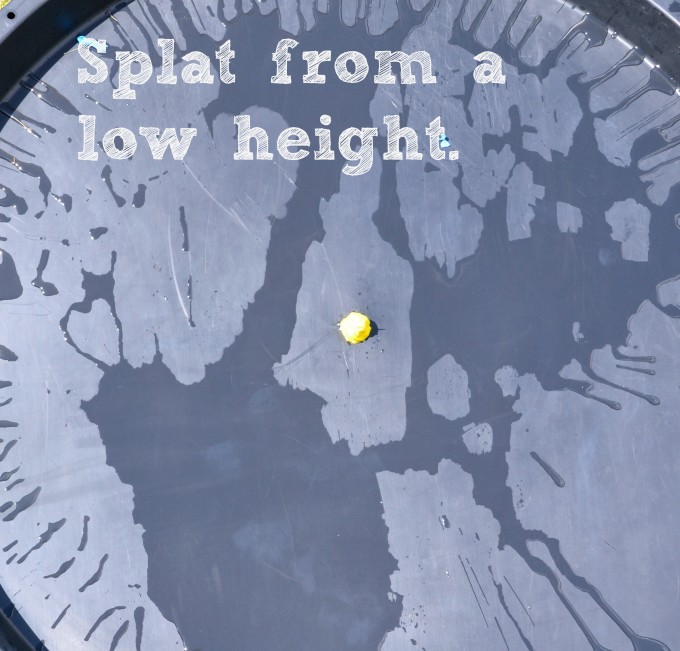
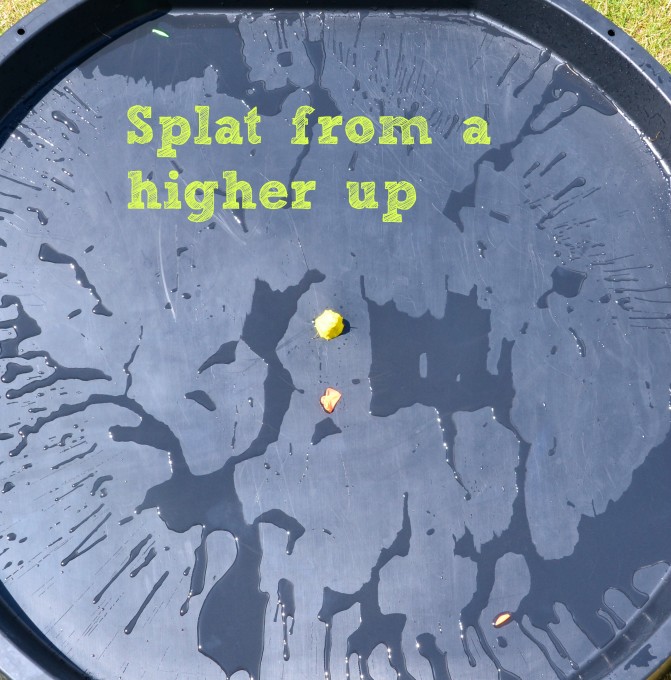
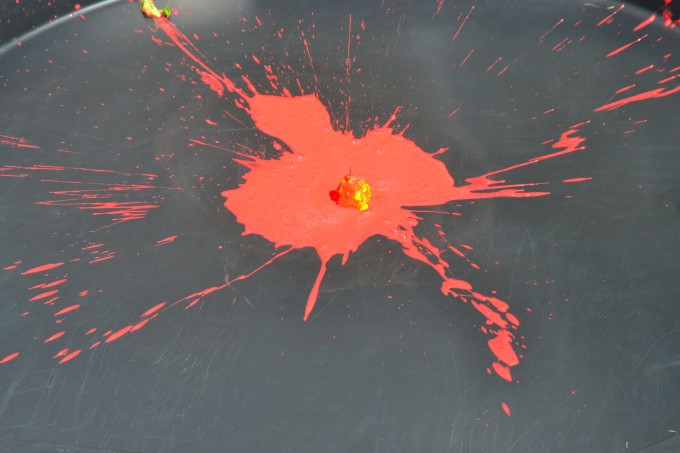
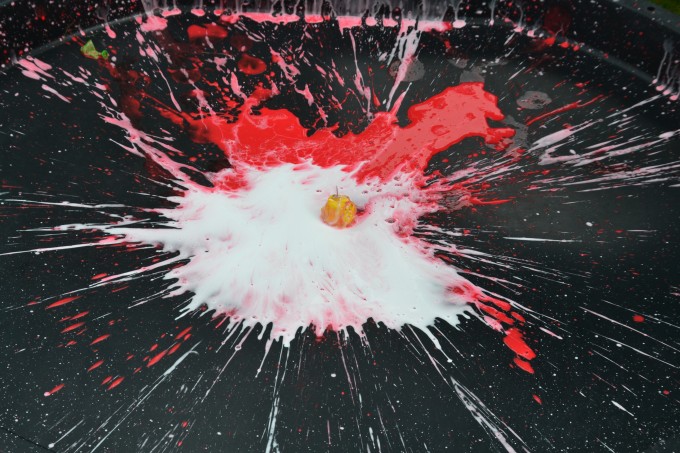

Fabulous – love this. Popping over from the Pin It Party – have pinned on my science board http://pinterest.com/mumsmakelists/science/
What an awesome idea! Creative and a wonderful way to get the kids into a bit of physical activity. I wish I had the space to try this :0)
What kind of paint did you use? I want to do this with about 100 kids at a public building. I need to make sure it washes away.